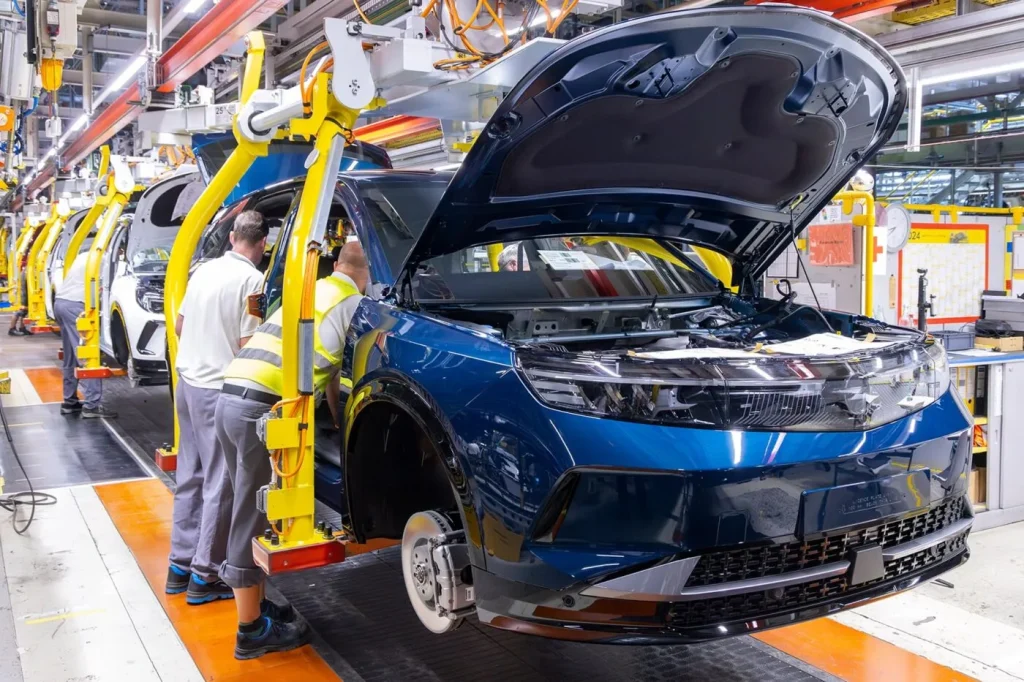Here is a summary and analysis of Stellantis Plant Pauses Signal Trouble for Europe’s Auto Market.
What’s Happening
Stellantis, the multinational automaker formed via the merger of PSA and Fiat Chrysler, has announced a series of temporary production halts across multiple European factories. The moves come amid weakening auto demand in Europe, rising inventories, and cost pressures.
Key affected locations include:
- Poissy, France: Production will be suspended from October 13 to October 31, affecting the DS 3 and Opel/Vauxhall Mokka lines (including their electric variants).
- Pomigliano, Italy: The plant will pause operations from September 29 to October 10. It produces the Fiat Panda, Alfa Romeo Tonale, and badge-engineered models like the Dodge Hornet.
- Spain (Zaragoza, Madrid): Production stoppages are planned, lasting 7 to 14 days. These plants build models like the Peugeot 208 and Opel Corsa, including EV versions.
- Poland (Tychy): A pause is confirmed, though the precise duration is not uniformly reported. This site builds small SUVs such as the Jeep Avenger, Fiat 600, and Alfa Romeo Junior.
- Germany (Eisenach): A more modest interruption is planned — reports vary from two to five working days — affecting production of the Grandland (ICE and BEV versions).
With these suspensions, Stellantis is effectively pausing output at six European sites over periods ranging from a few days to multiple weeks.
Why is this Happening
Several factors are driving Stellantis’ decision:
- Soft demand and falling sales
European auto sales have weakened in 2025. For instance, the Alfa Romeo Tonale saw a 42.1 % year-on-year drop in demand through August. Stellantis’ network is grappling with oversupply in some segments, particularly small cars and crossovers. - Inventory and production balancing
The company aims to align production with actual market absorption. By pausing output, it hopes to reduce stock buildups that erode margins. Moreover, the downtime allows maintenance, updates, and worker training. - Profit pressures and losses
Stellantis reported a €1 billion loss in the first half of 2025, citing the drag from inventory, cost inflation, and tariff policies, especially in North America. The European slowdown adds to already strained profitability. - Electrification challenges
The suspensions cover both internal combustion engine (ICE) and electric vehicle (EV) models. This suggests that demand weakness is broad-based, not just in conventional segments. The company is thus caught between maintaining EV momentum and managing near-term commercial viability.
Impacts and Risks
On Workers and Operations
Temporary production pauses typically lead to furloughs or reduced shifts for plant workers. In past similar decisions, thousands of jobs were affected across plants. There may also be ripple effects on suppliers, logistics partners, and local economies dependent on auto manufacturing.
On Brand Stability and Market Confidence
When a company pauses multiple plants within a region, it signals fragility in market fundamentals. This could erode dealer confidence, impact brand image, and prompt consumers to delay purchases — exacerbating the very demand issue Stellantis is trying to manage.
On Automation, Upgrades, and Restructuring
Such pauses may be used to accelerate retooling or structural changes. Stellantis may use the downtime to upgrade lines, shift production toward more profitable models, or rebalance its plant network toward EV capacity.
On Financials
Reduced output means lower short-term revenue. But if the action avoids overproduction and discounted sales, it could preserve margins. The net impact depends on how fast demand recovers and how well Stellantis realigns operations.
Outlook and Strategic Considerations
- Duration and scale uncertain: The announced pauses vary in length. Whether they become longer or spread to other plants will depend on how demand evolves in the coming months.
- Selective recovery: Some plants may restart sooner, especially those making high-demand or margin-rich models.
- Focus on high-growth models and EVs: Stellantis may accelerate transition toward EVs and more profitable segments if conventional models struggle.
- Cost discipline and investment trade-offs: The company must balance managing cash and freeing up resources for future investments (electrification, software, etc.).
- Potential consolidation or closures: If weak demand persists, Stellantis could consider permanent downsizing or plant consolidation.
Summary
Stellantis’ pausing of production across multiple European plants reflects both the severity of demand weakness in Europe and the need for the group to regain equilibrium between output and sales. The company is effectively adjusting operations to avoid overcapacity, manage cash, and reposition itself amid a turbulent auto market shift.
Whether this proves a prudent tactical adjustment or a warning sign of deeper structural malaise will hinge on future demand recovery, cost control, and Stellantis’ ability to pivot to its next-generation product mix.

